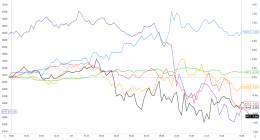
Relevance and value build a loyal customer base.
April 26, 2019 5 min read
Opinions expressed by Entrepreneur contributors are their own.
Are there any retailers where you shop regularly, but never pay full price? For example, there’s a home goods store that my wife and I visit every few months. Even though we’re loyal customers, we still check to make sure we have a coupon before heading to the store. The retailer sends us coupons all the time, so it would be crazy to buy anything without using one.
This is a common practice among U.S. retailers. They send out daily coupon codes or weekly promotions in the mail and through email. Sometimes these promotions can be for as much as 40 or 50 percent off the entire store. And as savvy consumers, we’ve all learned to wait for those coupons before we buy.
Related: Customer Intent Has Changed. Have You?
These promotions certainly drive purchases, otherwise retailers wouldn’t send them. But retailers that operate like this have found themselves stuck in a vicious cycle. Customers have learned to wait for a coupon to make their purchases, so retailers need to send more coupons to drive the same sales. But, of course, they’re leaving money on the table through their frequent discounting. What can they do?
Rely on segmentation to deliver more targeted promotions.
There’s nothing wrong with running regular promotions to drive purchases. The problem is that these coupons are often sent indiscriminately to everyone in the retailer’s database. While each coupon drives a lot of sales, there are unintended consequences. Shoppers that would have been willing to pay full price can access and use the coupon, so the retailer loses money on each of those transactions. Also, shoppers who are only interested in buying once in a while can become overwhelmed with the volume of coupons sent to them via email and unsubscribe — so the retailer loses future revenue from those shoppers.
To avoid these pitfalls, retailers should aim to send promotions only to shoppers that you believe need them in order to convert — not to those that don’t — and select the most relevant promotion for each person. This is certainly a lofty goal. If it seems too challenging, start heading in that direction by targeting your promotions through better segmentation.
To start simple, begin by testing different promotions for your high-value customers and your new email subscribers. For instance, you could send a broad discount to your new subscribers to encourage immediate action, but send each high-value shopper an email that promotes new items in their favorite category. You may find that many of those loyal customers will be willing to purchase new items without a discount.
Related: How Algorithms Can Predict Our Intentions Faster Than We Can
Then you can start segmenting further. Create a segment of shoppers who have purchased in the last 90 days and run a promotion to encourage them to make a repeat purchase. Create a segment of shoppers who have only purchased in a store and run a promotion to get them to buy online. Create segments of shoppers who regularly shop in certain categories and provide them with a coupon for a purchase in a new category that is relevant to them, but where they haven’t purchased before.
At this point, you may have one major concern: how do you decide which promotions to feature on your ecommerce website if you’ve emailed different promotions to different groups? Will it confuse shoppers?
To overcome this challenge, you should leverage website personalization to ensure that each person sees a promotion relevant to his or her segment. Rather than announce a 40 percent sale off everything to everyone on your homepage, you can personalize a prominent area of your homepage to show a relevant deal for each person. First-time visitors can be shown one promotion, while loyal shoppers can see another, etc. And if you’ve sent a person a promotion via email, you can ensure that the right promotion is displayed on your website to that same person so there’s no confusion.
Take your promotions to the next level with machine learning.
If you’re a little more advanced, you don’t need to leverage manual segmentation to accomplish this result. You could use machine-learning algorithms to pick the best promotion to deliver to each person. With this approach, you can feed the algorithm a few different promotions or offers — such as a coupon for 10 percent off a specific category, a reminder to join your loyalty program, an announcement of new arrivals in a specific category, etc. — and allow it to pick the most appropriate one for each person depending on what you know about each person. While this may seem more complicated than the segmentation process I described earlier, it’s actually an easier, more automated and scalable approach.
Related: 5 Ways Marketers Can Gain an Edge With Machine Learning
Conclusion.
There’s no reason to send the same promotion or offer to everyone on your email list every day. When you can deliver better promotions to your audiences, you’ll be more likely to engage your customers, rather than spam them with irrelevant promotions. Focus instead on building loyalty through relevance and value.
This article is from Entrepreneur.com








